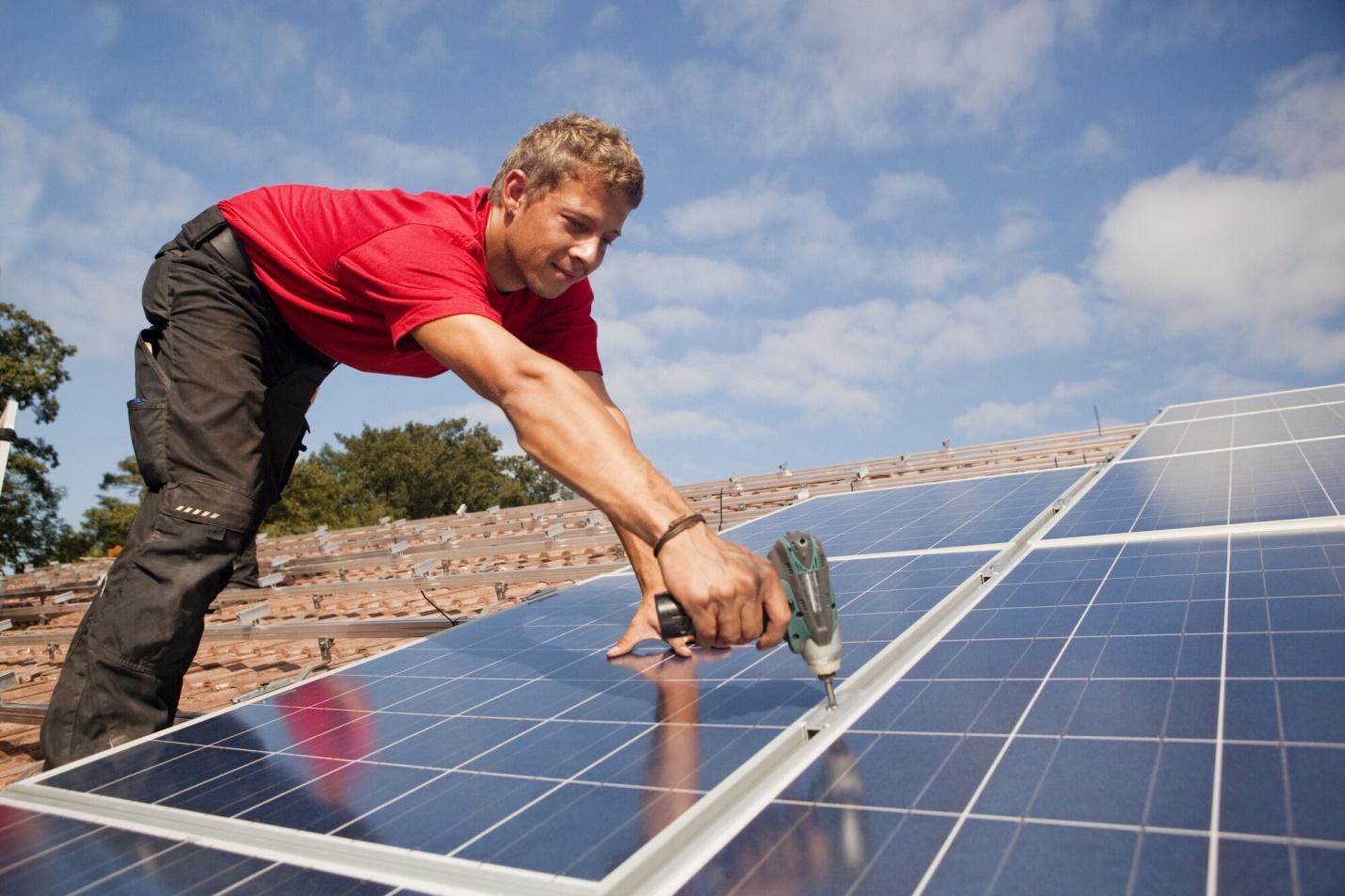As a homeowner, you probably know the value of a tax deduction. You are probably making the right improvements to your home that can help you reap the rewards of dollars in your pocket come tax time.
One project that many homeowners are considering this year is installing solar energy. This is a great investment and tax-smart choice for the environment and your bottom line. President Joe Biden noticed this trend, and on August 16, 2022, he signed a Federal tax credit for solar that covers increases in equipment costs and labor.
If you are considering a solar installation, and considering enacting the Biden solar tax credit, here is what you need to know about the specifics of this tax relief.

What Is Residential Clean Energy Credit?
The Biden Solar Tax Credit aims to make it easier and more affordable for homeowners to install solar energy technology in their homes. With the passage of the Tax Cuts and Jobs Act, individuals who buy and install solar energy systems qualify for a Residential Clean Energy Credit of up to 30% of the cost of the equipment.
This applies to both new and existing systems. Residents who have already purchased from this location and installed a solar system can take advantage of this tax credit too.
The credit also applies to other clean energy sources, such as geothermal and wind power. The Biden Solar Tax Credit is an important step towards meeting the US’ climate goals for 2030. This can help in unlocking the potential for solar energy in the country.
Who Is Eligible for a Tax Credit?
Biden’s solar tax credits offer homeowners and businesses an opportunity to save on their energy costs. To be eligible for the tax credit, applicants must install a solar system compatible with the government’s Energy Star standards. The system must be placed in service after December 31, 2021.
The tax credit is for up to 30% of the system costs. Eligibility for the credit is also based on income limits, with some low and moderate-income families eligible for higher credits, as well as deductions for education and job training expenses.
Those who do not qualify due to income limits can claim the original credit up until now and additional items until 2022. The Biden solar tax credit is a great way for homeowners and businesses to reduce energy costs while decreasing their environmental footprints.
What Products Are Covered by Tax Credit?
The Biden Solar Tax Credit is an incentive for the homeowner who uses products that help save the environment. This includes home clean electricity products, heating, and cooling. Also, water heating and other energy efficiency upgrades.
Home Clean Electricity Products
Biden’s solar tax incentives are great news for homeowners using clean electricity products. By having electricity products like solar, fuel cells, or wind turbines, homeowners can reduce their electricity bills and their carbon footprint.
Using this tax credit, not only can you, as a homeowner, reduce your energy bills but also increase your home’s efficiency. It can also boost the value of your property. Additionally, this tax credit will provide businesses with the incentive to invest in solar energy. This will result in greater savings and lower emissions.
Biden Solar Tax Credit is the perfect incentive to help reduce the pollution and energy burden from clean electricity products.
Heating, Cooling, and Water Heating
The Biden Solar Tax Credit is an important financial incentive to help homeowners offset the cost. As a homeowner, you can use efficient heat pumps, water heaters, biomass stoves, and geothermal heat pumps. You can also add solar for water heating, air conditioners, and heating equipment.
Homeowners will be eligible for a credit of up to $1,200 a year for the purchase and installation of qualifying solar energy systems. Furthermore, the tax credit can be spread out across two tax years, which means that homeowners can pay for their solar energy systems in stages.
The Biden Solar Tax Credit will help to reduce the cost of solar energy systems. It can also increase clean energy production, create jobs, and reduce pollution. With the increased demand and cost savings, more and more people are likely to invest in clean energy technologies, including heating, cooling, and water heating.
Other Energy Efficiency Upgrades
Homeowners looking to maximize their energy savings should consider other energy efficiency upgrades. Upgrades like having a new electric panel, insulation materials, and windows, including skylights. Also, exterior doors, home energy audits, and home electric vehicle chargers.
By doing so, you could lower their energy costs and become even more energy-efficient. This can also reduce the home or business’s overall emissions and help combat global climate change.
How to Claim a Tax Credit?
Claiming tax credits by Biden can be a fairly simple process. You must buy and install an eligible solar system or product. This product must be for your home use. Then, you should complete IRS form 5695 and submit it with your personal income tax return.
If approved, you will receive the tax credit amount within 90 days. This means that when you complete your taxes, you do not have to wait until the end of the year to reap the benefits of the Biden Solar Tax Credit.
Make sure that you record all your solar purchases. Keep all sales receipts, installation agreements, and other documents related to your solar energy system.
Also Read: A Comprehensive Guide To Buying Insurance for Traveling
Claim Your Biden Solar Tax Credit Today
Overall, the Biden Solar Tax Credit is a tremendous opportunity to incentivize renewable energy generation. Households looking to generate solar energy should look into the program and decide if they are eligible for the tax credits.
Be sure to know what residential clean energy credit is and check if you are eligible. Furthermore, be sure to specify what products are covered by the tax credit and how to claim the tax credit. Using this guide, you could save thousands of dollars in energy costs, so act now and get started with solar energy!
Are you still looking for more ways to increase the return on your solar energy system? Look no further, and be sure to check out our blogs for more!

